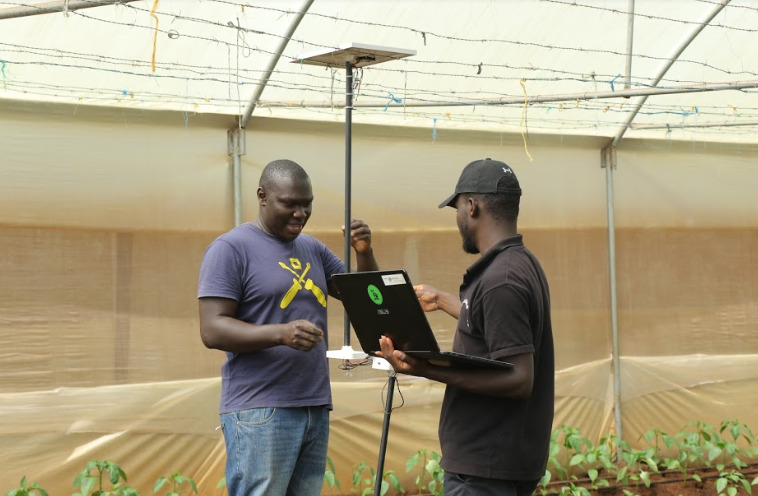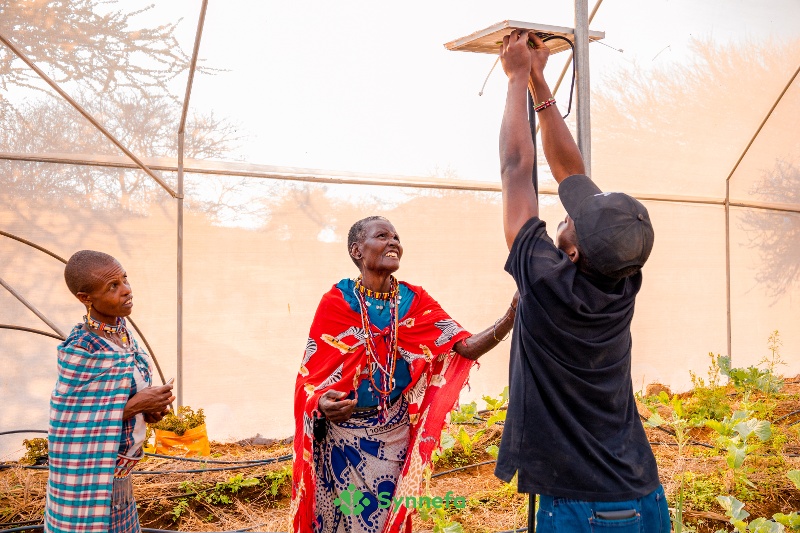Technology in Agriculture: The Simplified Route to Production

Technological innovations have greatly shaped agriculture throughout time. From the creation of the plow to the global positioning system (GPS) driven precision farming equipment, humans have developed new ways to make farming more efficient and grow more food. We are constantly working to find new ways to irrigate crops or breed more disease resistant varieties. These iterations are key to feeding the ever-expanding global population with the decreasing freshwater supply.
Applications of agritech are far-ranging and encompass several different types of agricultural and technological innovations. However, the aim of all these agricultural technology also referred to as agritech, is the same – an attempt to grow more food in less space and/or with fewer inputs. Agritech also saves farmers time and money, by automating tasks and replacing much of the labor needed on a farming operation – which usually constitutes the highest cost input to a farming system.
Smart greenhouses are no doubt a major farming trend to watch. A smart greenhouse brings conventional agricultural systems and new Internet Of Things (IoT) technologies together for complete visibility and automation. pic.twitter.com/wdzZePwD0F
— Synnefa (@synnefa_KE) November 23, 2021
Undoubtedly, technology is significantly altering the way we live and work. The adoption of various technologies in agriculture has brought several disruptions in the industry, with specific emphasis on agricultural jobs. Increasingly, agricultural technician jobs are now on demand to cater to the needs of the changing times. Nonetheless, it is clear that technology has changed agriculture, for the better! To discover the kinds of agricultural jobs technology has made possible, from farming jobs to agronomist jobs and agricultural finance jobs.
Importance of Agricultural Technology
Farmers no longer have to apply water, fertilizers, and pesticides uniformly across entire fields. Instead, they can use the minimum quantities required and target very specific areas, or even treat individual plants differently. Benefits include:
- Higher crop productivity
- Decreased use of water, fertilizer, and pesticides, which in turn keeps food prices down
- Reduced impact on natural ecosystems
- Less runoff of chemicals into rivers and groundwater
- Increased worker safety
Technological change has been the major driving force for increasing agricultural productivity and promoting agriculture development in the world. In the past, the choice of technologies and their adoption was to increase production, productivity and farm incomes. Over many decades, policies for agriculture, trade, research and development, education, training and advice have been strong influences on the choice of technology, the level of agricultural production and farm practices.
A new week is here with us and we'd like to share with you about Digitizing your farm.
— Synnefa (@synnefa_KE) November 22, 2021
There is tremendous opportunity for the transformation of agriculture in Africa into a sustainable and globally competitive sector at small and industrial scale. Our solution… pic.twitter.com/5HDYILMt9q
Agriculture is becoming more integrated in the agriculture food chain and the global market, while environmental, food safety and quality, and animal welfare regulations are also increasingly impacting on the sector.
Technology advancements on the farm, like an integrated farm management solution FMS, extend a farmers’ overall capacity, automate routine tasks normally done by people, and give farmers more time to do things computers can’t. It’s not a means to replace the personalized care farmers put into creating resources essential to human life, nor will the FMS determine the root cause of a problem in the field. A good FMS will include one-on-one expert support in farm management, crop marketing and agronomy.
A report published by the UN Department of Economic and Social Affairs predicts that by 2050, the human population will reach almost 10 billion. As the world’s current agricultural systems stand, we won’t be able to generate enough food to feed this population without the use of technological innovations.
“Voting against a resolution, simply because it was proposed by Israel, was more important for them than voting for a brighter future for their citizens,” Erdan said in a speech to the Economic and Financial Committee. https://t.co/79pdi6gAAb
— Algemeiner (@Algemeiner) November 25, 2021
Using irrigation as an example, we can demonstrate how different technologies are combined to offer smart farming. Before watering the farm field, a farmer can mount a sensor on an irrigator to assess the moisture level of the soil. The information obtained is then used to vary the quantity of water required.
Farmers can use drones to assess plant health and enable them to take any corrective measures, where applicable. Similarly, smart farming techniques allow farmers to monitor the individual needs of their animals better and regulate their nutrition correspondingly, thereby averting disease and improving their health.
Smart farming provides farmers with limitless potential to deliver a more sustainable and productive output based on field-generated data. Also, it gives farmers an added value through better and timely decision-making.
Conclusion
A large number of digital technologies have to be scaled up, some of which have been done already. To meet these challenges will require a concerted effort by governments, investors, and innovative agricultural technologies. For example, we have FarmShield™ where you can have your farm at your fingertips. With FarmShield™ you can remotely control your farm from your mobile phone and dashboard while getting real-time information on fertigation and irrigation needs for your crop. The agricultural sector is now looking forward to using a large number of digital technologies at the pre-production stage, in production and in the post production.
We know how busy it can be to you as a farmer. That's why we are dedicated to make your life easier and farming smoother.
— Synnefa (@synnefa_KE) November 21, 2021
Let us fit a Farmshield that monitors the farm for you. Your farm in your hands 📱 #Agri4Value pic.twitter.com/1QzLbohwcx
With advances in technology, farmers can more efficiently produce more with less manpower, aiming increased yields while using fewer inputs.
However, advancements in agriculture technology are an important contributor to a more sustainable agriculture system that promotes continuous improvement and less resource use. Technological advancements in food and agriculture are making it possible to improve the health and wellbeing of millions of people worldwide. It’s necessary to enable the world to produce more food with fewer resources and less land.


